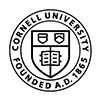Discoid Meniscus
Discoid Meniscus - Everything You Need To Know - Dr. Nabil Ebraheim
Content below from POSNA.org
Key Points:
- Discoid menisci present as a snapping knee most commonly in first two decades of life.
- It is a congenital variant.
- More commonly found on lateral side, it can be associated with lateral femoral condyle OCD lesions.
- Treatment of symptomatic lesions can include saucerization and repair.
Description:
Discoid menisci are a congenital meniscal variant commonly seen in the lateral compartment, with sporadic reporting of medial cases. It is reported to be present bilateral in up to 20% of patients. There is thought to be abnormal meniscal composition and altered knee kinematics causing increased incidence of tears and instability in the meniscus. Stable discoid menisci can present with mechanical symptoms of meniscal tear. When a discoid meniscus is unstable peripherally, it may present with snapping knee.
Epidemiology:
Video Testimonial after complex discoid meniscus repair
First described in 1889 by Dr. Young in a cadaver specimen, they are present in 1.5-16.6% of people but true incidence is not known due to likely high percentage of asymptomatic patients. There is a higher prevalence in Asian populations. Up to 20% of cases are bilateral. Children who present with symptoms before age 12 are 4.6 times more likely to eventually require surgery on both knees. Additionally, patients with complete or Wrisberg type discoid menisci are more likely to have bilateral symptoms. Females, patients with BMI over 32, and patients with duration of symptoms greater than 6 months were more likely to have articular cartilage lesions at the time of arthroscopy.
Clinical Findings:
Patients typically present in first two decades of life. They can present with activity related pain, effusions, mechanical symptoms or a “Snapping knee” which represents a hypermobile lateral discoid meniscus due to lack of peripheral attachments. Exam findings include effusions, joint line tenderness, lack of full knee extension and palpable snapping with range of motion. A modified McMurray test at 30-40 degrees of knee flexion offers greater specificity to diagnosing meniscal tears than MRI.
Imaging Studies:
Xrays should be obtained prior to advanced imaging. They may show widened lateral compartment with flattening/squaring of lateral femoral condyle, tibial plateau concavity, meniscal calcification, or tibial spine hypoplasia. Concomitant osteochondritis dissecans lesions of the lateral femoral condyle have been reported.
MRI should be obtained for symptomatic discoid menisci. Sagittal cuts will typically show continuity of the anterior and posterior horns on 3 or more consecutive 5mm cuts. Practitioners can also look for intrasubstance tearing, which is a high false positive finding.
The Watanabe classification is most commonly used:
- Complete discoid meniscus covering entire plateau with intact peripheral attachments – most common.
- Incomplete discoid meniscus with intact peripheral attachments.
- Wrisberg ligament type: absent posterior meniscal attachments with only Wrisberg ligament remaining for stability – least common.
The Wrisberg ligament (posterior meniscofemoral ligament) attaches the posterior horn of the lateral meniscus to the medial femoral condyle running posterior to the PCL. In snapping knees, this is the only restraint to translation.
Etiology:
Dr. Garcia demonstrates his technique for discoid meniscus repair in a young active patient
Treatment:
Asymptomatic incidental findings of discoid meniscus are treated with observation alone. Observation and conservative management of symptomatic patients is also an option. Surgical intervention is warranted for intrasubstance tears or instability of the discoid meniscus. Surgical options include meniscal saucerization/partial menisectomy and meniscal repair. Considerations to age, type of variant and severity/duration of symptoms will help in treatment decision making. Post-saucerization, a meniscal remnant of 6-8 mm circumferentially is ideal. Intra-operatively, discoid meniscus tears are associated with cartilage lesions 26% of the time.
Total meniscectomy and meniscal transplant are reserved for rare, unsalvageable cases.
for more information visit POSNA.org

















